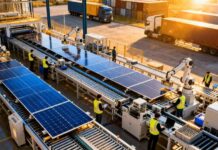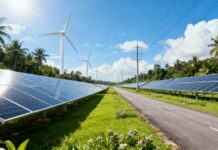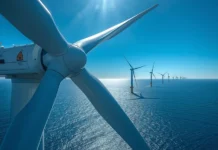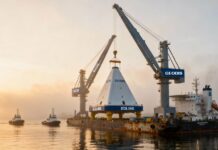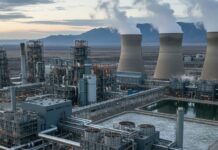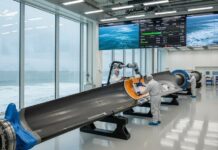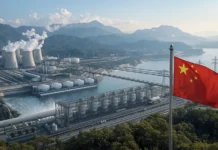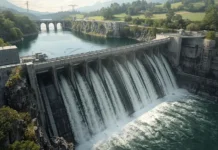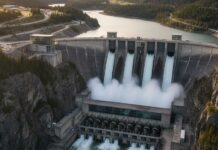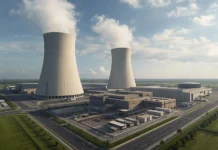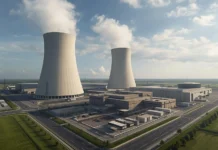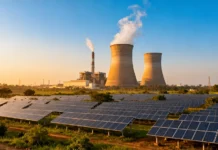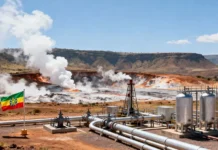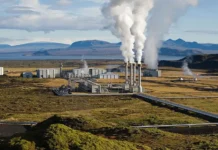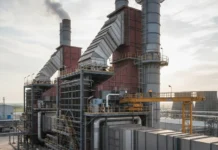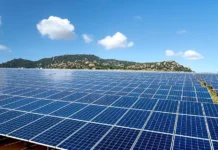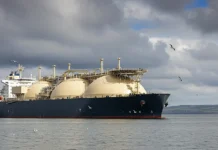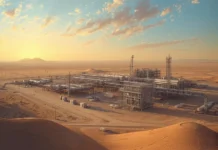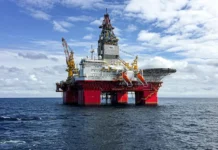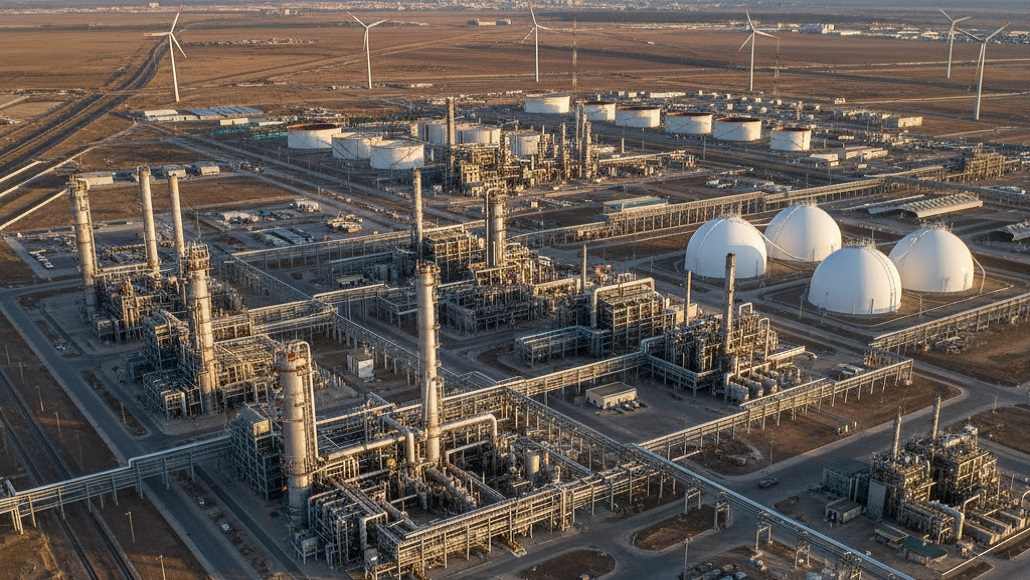Carbon-Neutral Refineries: Redefining the Role of Fossil Fuels in a Clean Era
The petroleum refining industry stands at an inflection point. As the world accelerates toward net-zero emissions targets, refineries that have powered industrial civilization for over a century face an existential question: can facilities processing fossil fuels reconcile their operations with climate imperatives? Carbon-neutral refineries offer an affirmative answer, demonstrating how carbon capture technologies, renewable energy integration, process electrification, and operational innovations can transform these industrial complexes from major emissions sources into compatible elements of clean energy transitions. This refinery innovation represents not an abandonment of hydrocarbon processing but a fundamental reimagining of how it can proceed sustainably.
The Refining Sector’s Carbon Challenge
Oil refineries contribute approximately 4 to 5 percent of global carbon dioxide emissions, representing a significant source that requires urgent attention as net-zero initiatives become more widely adopted. The refining sector faces increasing pressure to lower carbon emissions, which will only intensify over coming decades. While processes within refineries contribute only 5 to 10 percent of total emissions resulting from oil products, the opportunities for reducing these emissions are significant due to the nature of processes used and the fact that these are large-scale fixed locations.
Within refineries, the largest sources of carbon dioxide emissions are Scope 1 (direct) and Scope 2 (indirect) from stationary combustion, accounting for up to two-thirds (60 to 70 percent) of total emissions. Substantial emissions also arise from fluidized catalytic cracking units accounting for 15 to 35 percent, and steam methane reformer units producing hydrogen accounting for 10 to 30 percent. This concentration of emissions in specific unit operations creates opportunities for targeted carbon capture interventions.
Refineries have several units that emit carbon dioxide including steam methane reformers producing hydrogen, catalytic crackers, and combined heat and power units. The emissions of individual refineries depend on numerous factors including refinery configuration, type of fuel used, and crudes processed. Heavy sour crudes require more energy to process than light sweet crudes, creating higher emissions per barrel processed.
Carbon Capture and Storage Technologies
Carbon capture, utilization and storage technology provides one of the best ways refineries can decarbonize, and carbon capture can be paired with hydrogen production to provide new opportunities and diversify value chains. Carbon capture technologies can capture up to 90 percent or more of carbon dioxide emitted from oil refineries. The industry can readily implement CCUS technologies to reduce oil refinery emissions and help the world achieve net-zero goals.
Three principal approaches exist for carbon dioxide capture: post-combustion, pre-combustion, and oxyfuel combustion. Post-combustion capture removes carbon dioxide from flue gases after fuel combustion, typically using amine-based solvents that selectively absorb carbon dioxide. Pre-combustion capture converts fuel into syngas (hydrogen and carbon monoxide mixture) before combustion, separating carbon dioxide at high concentrations that reduce capture costs. Oxyfuel combustion burns fuel in pure oxygen rather than air, producing flue gas primarily composed of carbon dioxide and water vapor that simplifies separation.
The Phillips 66 Humber Refinery in the United Kingdom is implementing Shell’s CANSOLV carbon capture technology, making it potentially the first refinery in the world to reduce carbon emissions using this system. CANSOLV will be deployed to capture carbon produced in the refinery’s fluidized catalytic cracking process with potential to capture at least 95 percent of carbon dioxide in FCC flue gas, compressing it before transport for safe storage under the North Sea. The projected startup of the facility is expected in 2027.
There are more than 300 fluidized catalytic crackers in the world, making technology developed for the Humber Refinery applicable globally with potential to decarbonize refineries worldwide. This project supports Humber Zero, a first-of-a-kind initiative putting the Humber Refinery on track to become the world’s first refinery to reduce carbon emissions using CANSOLV at scale.
Low-Carbon Hydrogen Integration
Hydrogen produced electrolytically using renewable energy and hydrogen made from natural gas with carbon capture and storage can serve as refining feedstock and fuel within refineries. Shell’s REFHYNE II project at the Rheinland Refinery in Germany will install a 100 megawatt renewable proton exchange membrane electrolyser expected to produce up to 44 tonnes of hydrogen per day to partially decarbonize site operations. Using renewable electricity, REFHYNE II will begin operating in 2027, building on lessons learned from REFHYNE I, a 10 megawatt electrolyser that has operated since mid-2021.
Conventional refineries use gray hydrogen produced from natural gas through steam methane reforming, generating substantial carbon dioxide emissions. Transitioning to low-carbon hydrogen eliminates these emissions while maintaining the hydrogen supply essential for desulfurization, hydrocracking, and other refining processes. The shift to low-carbon hydrogen represents one of the highest-impact decarbonization measures refineries can implement.
Methane pyrolysis, which generates carbon dioxide-free hydrogen, is being demonstrated and gaining momentum as an alternative production pathway. This process decomposes methane into hydrogen and solid carbon, avoiding carbon dioxide generation entirely. The solid carbon can be used in various industrial applications or permanently sequestered, providing a disposal pathway simpler than carbon dioxide storage.
Renewable Energy Powering Refinery Operations
United States fuel and petrochemical manufacturers are using renewable energy to power their facilities and reduce greenhouse gas emissions in the process. Flint Hills Resources announced it will build its second company-owned solar installation at its Corpus Christi West refinery, a 27 megawatt solar installation including approximately 56,700 panels believed to be the first solar project in Texas providing on-site, self-generated electricity directly to a refinery. The company also began full operation of its 45 megawatt solar system at its Pine Bend, Minnesota refinery in early 2024, currently the largest of its kind providing direct input to an operating refinery.
Since the beginning of 2022, all electricity used at Neste’s Porvoo refinery in Finland has been renewable, using both wind power and hydropower. Transitioning to renewable electricity significantly reduces Scope 2 emissions while demonstrating feasibility of powering energy-intensive refinery operations with clean power.
The introduction of renewable electricity along with energy-efficiency measures represents key short- and medium-term emission reduction approaches. In the longer term, refineries will focus on introduction of new low-emission technologies and innovations such as green hydrogen, and exploring potential of carbon capture and utilization. Neste’s target is to reduce absolute Scope 1 and 2 emissions by 50 percent by 2030 compared to 2019 and reach carbon neutral production by 2035.
Process Electrification and Energy Efficiency
Transitioning to low- or zero-carbon alternatives including renewable power generation, low-carbon hydrogen production, and process electrification can significantly reduce carbon dioxide emissions. This approach has the added benefit of eliminating the need for carbon dioxide disposal. The industry is witnessing substantial momentum in these areas with technological advancements and anticipated reduction in renewable electricity costs.
Effective carbon mitigation at refineries can begin with efficiency improvements reducing emissions by approximately 3 to 5 percent on average. Improving energy efficiency plays important roles in achieving decarbonization goals. The energy efficiency of refineries can be improved by electrifying steam or fuel gas-fired processes and equipment and by improving energy management at different production process stages through optimizing cooling and heating of flows between process units.
In the process of new equipment investments, refineries are evaluating options according to their emissions, as new low-emission technologies also enable improved energy efficiency. Better heat integration, waste heat upgrading, electrification, and improved energy monitoring systems lower carbon footprints while often reducing operational costs through decreased energy consumption.
Electric-powered furnaces (e-furnaces) and oxy-firing may play significant roles in future decarbonization projects, though these technologies are currently at low levels of technical readiness. As these technologies mature and costs decline, they will provide additional pathways for eliminating fossil fuel combustion within refinery processes.
Net-Zero Emissions Technology Innovations
Clean Refineries Inc. has developed and markets innovative, highly disruptive patented hydrocarbon processing technology used to manufacture high-margin products including asphalt, naphtha, kerosene, diesel, gasoline, and aviation fuel with net-zero greenhouse gas emissions and net-zero carbon dioxide. The patented technology, which has been in production since 2017, surpasses government emissions regulations and qualifies projects for federal and state funding, grants, and tax credits through the Infrastructure Act, U.S. Department of Energy programs, Green Road Initiatives, and PACE programs.
The closed-loop net-zero emissions technology process supplies energy markets while generating net-zero emissions. Clean Refineries announced a strategic partnership with Permian Energy Partners to bring this technology to the Permian Basin, addressing critical needs in underserved markets while creating environmentally responsible solutions and generating high-quality jobs. Over 6 million barrels of oil are produced per day in the Permian Basin, yet local processing capacity remains insufficient, leading to increased transport and consumer costs.
The technology addresses growing demand for low-carbon transportation materials by meeting needs of highway infrastructure projects. With traditional processing facilities closing worldwide, Clean Refineries is positioned to provide critical products like asphalt to bridge supply gaps, particularly in the United States where massive asphalt shortages present significant expansion opportunities.
Clean Refineries partnered with Eden Carbon Solutions to transform carbon dioxide emissions into sustainable aviation fuel, combining net-zero emissions technology with advanced carbon dioxide-to-fuel conversion systems. This partnership creates integrated carbon utilization pathways that convert refinery emissions into valuable transportation fuels, exemplifying how carbon-neutral refineries can contribute to hard-to-decarbonize aviation sectors.
Feed and Product Diversification Strategies
Feed and product diversification can provide substantial Scope 3 emissions reductions through using biogenic or waste-sourced feedstocks for co-processing, dedicated biofuels production, and petrochemicals production. Refineries are increasingly processing renewable feedstocks including used cooking oil, agricultural residues, and other biomass alongside conventional crude oil, producing drop-in biofuels that require no changes to distribution infrastructure or end-use equipment.
In net-zero scenarios, demand for conventionally produced carbon-based fuels is expected to decrease significantly with electrification of transport and increased use of hydrogen and biomass-derived fuels. However, some demand for these fuels may still exist, particularly in developing countries and for aviation which is difficult to electrify. Refineries must develop capabilities to produce chemicals and materials from biomass and recycled plastic, and synthetic fuels from carbon dioxide and hydrogen.
This transition requires capturing carbon dioxide from industrial processes or directly from air and hydrogen from electrolyzing water, with entire processes powered by renewable energy estimated to require ten times as much energy as existing refineries. The substantial energy requirements and costs of building alternative refinery capacity necessitate policies including carbon taxes and removal of fossil fuel subsidies to unlock necessary funding.
Refineries that can process diverse feedstock slates while producing both conventional and renewable products will prove most resilient as markets evolve. This flexibility enables facilities to optimize operations based on feedstock availability, product demand, and carbon pricing dynamics while maintaining asset utilization and economic viability.
Economic and Policy Considerations
Carbon capture for refineries faces challenges including complexity of retrofitting existing facilities with capture equipment given numerous carbon dioxide point sources, limited on-site space, and remote locations. However, carbon pricing markets and technologies are evolving rapidly, potentially lowering costs and enhancing economic viability of broader decarbonization options.
The Infrastructure Investment and Jobs Act and Inflation Reduction Act in the United States provide substantial incentives for carbon capture, low-carbon hydrogen, and renewable energy deployment. These policies have supported plans for more than 200 low-carbon hydrogen projects across 35 states, with roughly 130 projects announced since the Inflation Reduction Act passed. Tax credits and direct funding mechanisms improve project economics while demonstrating policy commitment to industrial decarbonization.
Regional variations in electricity costs, carbon pricing regimes, renewable energy availability, and geological carbon storage potential create different economic cases for carbon-neutral refinery technologies across geographies. The Middle East Gulf Cooperation Council region, Europe, the United States Gulf Coast, and Singapore each present distinct combinations of factors influencing optimal decarbonization pathways.
Refinery decarbonization costs and barriers must be overcome to contribute to decarbonized futures, with subsequent policy reports describing frameworks that could facilitate transitions. Clear long-term policy signals including carbon prices, renewable fuel standards, and low-carbon product incentives provide certainty that justifies multi-billion dollar infrastructure investments with multi-decade payback periods.
The Future Role of Carbon-Neutral Refineries
Refineries will continue playing important roles in global energy systems even as transportation electrifies and renewable energy expands. Beyond fuels, refineries produce essential intermediate products including asphalt, solvents, waxes, lubricants, and petrochemicals that underpin modern life. These products have no near-term alternatives at scale, ensuring continued demand for refining capacity regardless of transportation sector transitions.
The question is not whether refineries will exist but how they will operate within carbon-constrained futures. Carbon-neutral refineries demonstrate feasibility of continued hydrocarbon processing aligned with climate goals through comprehensive deployment of carbon capture, renewable energy, low-carbon hydrogen, process electrification, and feedstock diversification.
Early movers implementing carbon-neutral technologies gain competitive advantages as carbon pricing intensifies and low-carbon product mandates expand. Refineries serving markets with strict emissions regulations or carbon border adjustments must decarbonize to maintain market access. Those developing carbon-neutral capabilities position themselves to serve premium segments willing to pay for low-carbon products.
The transition to carbon-neutral refineries requires sustained technological innovation, substantial capital investment, supportive policy frameworks, and industry commitment to emissions reduction. Success will redefine the refining sector’s role in energy transitions from obstacle to enabler, demonstrating that even carbon-intensive industries can align operations with planetary boundaries through determined application of available and emerging technologies. This transformation proves essential for achieving net-zero goals while maintaining supplies of products that society will continue demanding for decades as comprehensive energy transitions unfold.



